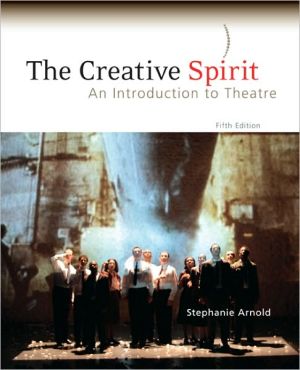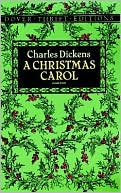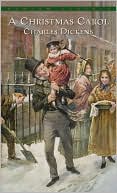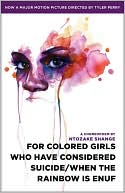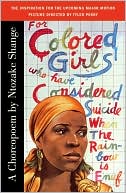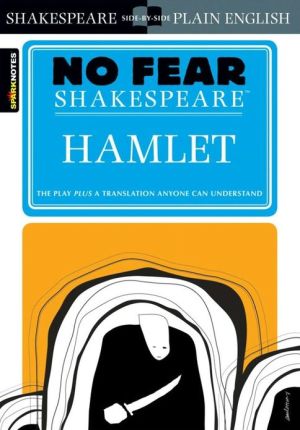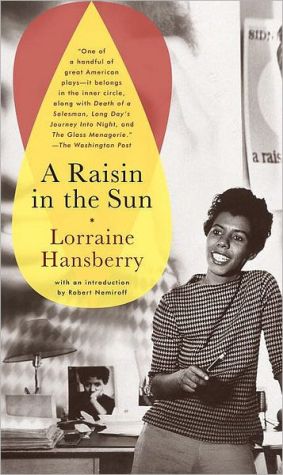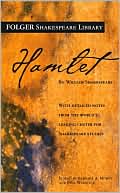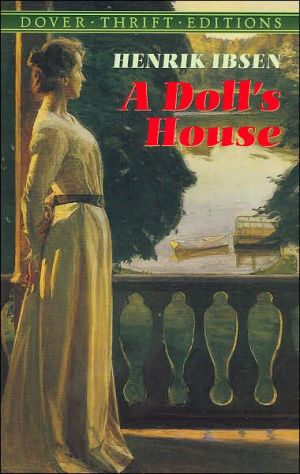The Creative Spirit: An Introduction to Theatre
Focusing on the collaborative and creative processes that go into productions, The Creative Spirit: An Introduction to Theatre introduces students to the theatre through the plays themselves and the people who write them, create them, and act in them. The book provides a rich context for each play with a discussion of the playwright's other works, sources for the play, timelines that present historical and cultural background, and a section on a particular production of the play to give...
Search in google:
Focusing on the collaborative and creative processes that go into productions, The Creative Spirit: An Introduction to Theatre introduces students to the theatre through the plays themselves and the people who write them, create them, and act in them. The book provides a rich context for each play with a discussion of the playwright's other works, sources for the play, timelines that present historical and cultural background, and a section on a particular production of the play to give students a sense of the theatre industry at close hand. The Creative Spirit includes complete scripts of five plays: August Wilson's Joe Turner's Come and Gone, Wakako Yamauchi's And the Soul Shall Dance, Tony Kushner's Angels in America, Milcha Sanchez-Scott's Dog Lady, and Nilo Cruz's Anna in the Tropics.Stephanie Arnold received her B.A. degree in English from Stanford University and then continued her studies at the University of Wisconsin where she received an M.F.A. degree in directing and a Ph.D. in dramatic literature and theory. Before joining the Lewis & Clark College faculty in 1986, she taught at Mills College and the University of California, Riverside.Stephanie Arnold teaches acting, directing, and dramatic literature including a special topics course in Latino Theatre. The productions she has directed include works by classical and contemporary playwrights as well as musicals and opera. She is currently at work on the fifth edition of her textbook, The Creative Spirit: An Introduction to Theatre, which is published by McGraw-Hill and in use at colleges and universities around the country. She has recently returned from leading the Lewis & Clark College off campus study program to New York City.BooknewsIncorporates the complete texts of Wilson's
Preface xxiThe Nature of Theatre 1The Impulse to Perform 3Personal Performance 5Community Performance 5Ritual Performance among the Hopi 8Kachina Performances 8The Hopi Performer 8Performance as Community Obligation 10Professional Performance: Four Stories 10Bill Irwin: Physical Humor 10Anna Deavere Smith: The Power of Words 12Neil Marcus: Storyteller and Dancer 13Frances McDormand: Creation of Character 15Why They Perform 17Summary 20Topics for Discussion and Writing 20Suggestions for Further Reading 20Theatre and Society 23The Power of the Theatre 24Society and Aesthetic Expression 25The Collective and Public Nature of Theatre 26Theatre as a Social Force 26Theatre and Religious Festivals 27The Greek Theatre: Athens, Fifth Century B.C.E. 28The Origin of Greek Theatre in the Worship of Dionysus 28Medea Euripides 30Staging Conventions 31The Medieval Mystery Cycle 35Staging and Production: A Community Endeavor 36Aesthetic Expression: A Shared, Sacred Language 36The Role of the Mystery Cycles in Medieval Society 37The Professional Theatre 38The Elizabethan Theatre 39The Theatre in Society 39The Nature of Elizabethan Drama 40William Shakespeare 41Elizabethan Staging 43Acting in Elizabethan Dramas 45The Beijing Opera of China 45A Formal Society 46Playwrights and Plays 46A Language of Gesture 47Acting and Staging 48The Beijing Opera and the Communist Revolution 50Theatre as a Mirror of Society 51Theatre and Social Change 52The Sustaining Power of the Theatre: Waiting for Godot in Sarajevo 55Summary 57Topics for Discussion and Writing 58Suggestions for Further Reading 58The Nature of Performance: The Theatre Practitioners 61The Playwright's Vision 63Looking at Joe Turner's Come and Gone August WilsonExploring the Text of Joe Turner's Come and Gone 66Plot and Characters: A Meeting of Two Worlds 67Historical and Cultural Contexts of the Play 68Theatre as History 69The Aftermath of Slavery: Peonage and Sharecropping 69Migration to the North 69The Metaphor of the Road 70The Oral Tradition 71The Playwright's Sources 71Bessie Smith and Romare Bearden 71Mill Hand's Lunch Bucket 73Folk Sources and W. C. Handy 73The Complete Text of Joe Turner's Come and Gone 76Producing Joe Turner's Come and Gone 115The Construction of Meaning Through Collaboration 115The Oregon Shakespeare Festival 115The Actors at Work 116Understanding the Play 116The Rehearsal Process 117Physical Characterization 119Staging the Juba 120Drumming and Dancing 120Text and Verbal Improvisation 121The Meaning of the Juba 122Expanding the Stage Image: The Work of the Designers 123The Set Design 124The Costume Design 125The Lighting Design 126Conclusion: History and Meaning in Joe Turner's Come and Gone 127The Quest for Self 127Family and Inheritance: The Way from the Past to the Future 128Summary 129Topics for Discussion and Writing 129Suggestions for Further Reading 130The Art of the Actor 133The Presence of the Actor 134The Actor's Craft 136The Work of the Actor 138Competing for Roles: The Audition 138Preparing for the Role 140The Rehearsal Process 141Approaches to Acting 146The Internal Approach 146The External Approach 147Acting Cordelia in King Lear 148Gestural Acting 150The Performance 153Theatre and Film 154Becoming an Actor 155Summary 156Topics for Discussion and Writing 157Suggestions for Further Reading 157The Director 159The History of the Director 160The Director and the Development of Realism 160The Director and the Determination of Style 163The Visionary Director: Jerzy Grotowski 164Ping Chong 166Approaches to Directing 170The Director at Work 171Choosing the Play 171The Director's Initial Response to the Play 173Creating Metaphors 173Working With the Actors 175Casting 175Nontraditional Casting 176The Work Environment 176Improvisation 177Staging the Play 178Focus 178Spatial Composition and Character Development 180Rhythm and Pacing 180Preparing the Play for Performance 181The Director's Training 182Summary 183Topics for Discussion and Writing 184Suggestions for Further Reading 184The Designers 187StageCraft and the Theatre 189The Theatrical Space 190The Proscenium Theatre 191Thrust, Arena, and Black Box Stages 191The Implications of Theatre Architecture for Designers 191Three-Dimensional Space 194Meetings and Interactions 195The History of Scene Design 198Scene Design Today 200Designing The Grapes of Wrath 200Costume Design 203Stylistic Unity 204The Psychology of Character 205The Costume Designer and the Actor 207Lighting Design 208The History of Light in the Theatre 209The Lighting Designer's Materials 209Conceptualizing with Light 210The Light Plot and Light Cues 211Visibility 211Focus 212Mood and Atmosphere 212The Rhythm of Light 212The Growing Prominence of Sound Design 213The Integration of Sound into the Production Process 213The Sound Designer's Materials 213Environmental Sound and Sound Reinforcement 215Summary 215Topics for Discussion and Writing 216Suggestions for Further Reading 217The Musical Theatre 219Origins of Musical Theatre in America 220The Broadway Theatre 221Oklahoma! 221West Side Story 223My Fair Lady 224Cabaret 226Stephen Sondheim 228A Chorus Line 230New Directions for the Musical Theatre 232Savion Glover and Bring in da Noise, Bring in da Funk 232Jonathan Larson and Rent 234Julie Taymor and The Lion King 235Susan Stroman and Contact 238Summary 240Topics for Discussion and Writing 241Suggestions for Further Reading 241The Nature of Style: Realism and Theatricalism 243Understanding Style: Realism 245Introduction to Realism 246"Realistic Elements in Joe Turner's Come and Gone 246Realism in Film 247Origins of Realism 248The Social Background of Realism 249European Realism 250Henrik Ibsen 250August Strindberg 251Anton Chekhov 251American Realism 253Lillian Hellman 253Poetic Realism: Arthur Miller and Tennessee Williams 254Konstantin Stanislavsky and Realistic Acting 256Summary 257Topics for Discussion and Writing 260Suggestions for Further Reading 261Expressing a Worldview Through Realism 263Looking at And the Soul Shall Dance Wakako YamauchiExploring the Text of and the Soul Shall Dance 264Plot and Characters 265Personal, Cultural, and Historical Contexts of the Play 265The Play as Memory 265Personal History 268Prejudice, Discrimination, and Internment 268The Play as Social Document 269Evoking a World Through Detail 270The Complete Text of and the Soul Shall Dance 272Producing and the Soul Shall Dance 303Introduction to East West Players 303History of East West Players 303Location and Physical Space 303Staging the Play 305The Director's Prologue 305The Influence of Asian Theatre 306Staging a Period Play: The Work of the Director and the Actors 306Building Character Relationships 310Contrasting Productions: East West Players and Northwest Asian American Theatre 313Scene Design and the Physical Space 313Interpreting Family Relationships 313Sexuality and Gender 315Summary 316Topics for Discussion and Writing 317Suggestions for Further Reading 317Understanding Style: Theatricalism 319Exposing the Mechanics of the Theatre 321Expressionism 321German Expressionism 322American Expressionism: Eugene O'Neill 323Epic Theatre: Bertolt Brecht 325Brecht's Concept of Alienation 326Brecht's Approach to Acting 327Theatre of the Absurd 328A Revolution in Movement: Martha Graham 329A New Dance Vocabulary 329Costume and Set as Partners in Dance 331Total Theatre: Robert Wilson 331Wilson's Experience 332The Interior Landscape 332A New Meeting of East and West; Shen Wei 333From Opera to Modern Dance 333Choreographer and Designer 335Summary 336Topics for Discussion and Writing 336Suggestions for Further Reading 337Expressing a Worldview through Theatricalism 339Looking at Angels in America: Millennium Approaches Tony KushnerExploring the Text of Angels in America: Millennium Approaches 341Plot and Characters: A World in Spiritual Collapse 341The Role of Roy Cohn 342The Shifting Point of View 342Influences on Kushner as Playwright: Bertolt Brecht and Caryl Churchill 342The Historical Framework of Angels in America 344The Character Roy Cohn as a Historical Figure 345Roy Cohn and the Plot of Angels in America 347Roy Cohn and Ethel Rosenberg 348The Complete Text of Angels in America: Millennium Approaches 350Producing Angels in America 398The Eureka Theatre and the Playwright 398The Role of the Dramaturg 398The Developmental Process 400Expanding Opportunities for the Development of New Plays 404Summary 405Topics for Discussion and Writing 405Suggestions for Further Reading 406The Nature of Drama: Structure and Genre 407The Elements of Drama and Dramatic Structure 409Fundamental Elements of Structure 410Character 410Plot 411Language 412Music 417Spectacle 417The Organization of the Drama in Space and Time 419The Duration of the Performance 419Building the Drama: The Internal Rhythm 420Conflict, Rising Tension, and Resolution 420Summary 422Topics for Discussion and Writing 423Suggestions for Further Reading 423Genre 425Introduction to Genre 426Tragedy and Comedy 427Origins in Greek Drama 428Aristotle on Tragedy and Comedy 428Tragedy: Catharsis and Awareness 429Plot Summaries of Selected Tragedies 429Common Themes of Tragedy 431Can Tragedy Exist Today? 432Melodrama 434Tragicomedy 436Farce 439Writing About the Theatre 440The Dramaturg 441The Critic 443Two Reviews of Medea 445Summary 450Topics for Discussion and Writing 450Suggestions for Further Reading 451Choosing a Genre: Comedy 453Looking at Dog Lady Milcha Sanchez-ScottExploring the Text of Dog Lady 454Plot and Characters 454The Playwright's Sources: An Intersection of Cultures 455Characteristics of the Play 456Blended Language 456Magical Realism 457Reinterpreting Catholic Imagery: The Virgin of Guadalupe 458A Latina Identity 460The Complete Text of Dog Lady 461Producing Dog Lady 473Intar 473Set Design and Ming Cho Lee 473Pop Art and Forced Perspective 473Breaking the Illusion 474Staging and Acting 474Sight Gags 476Vocal Style 477Using Comedy to Shift the Worldview 478Summary 479Topics for Discussion and Writing 480Suggestions for Further Reading 480The Project 483Looking at Buried Child Sam ShepardPreparing a Production 484Buried Child and Alternative Play Choices 484Introduction to Sam Shepard 485Alternative Plays 487Working on the Project 487Sequence of Work 487Topics for Group Discussion (Group Meeting 1) 488Group Decisions (Group Meeting 2) 488Project Assignments 488The Director 488Character Analysis 489Scene Design 489Costume Design 490Music 491Program Note 492Poster 492Conclusion 492The Complete Text of Buried Child 493Suggestion for Further Reading 532Guided Writing Assignments 533Notes 539Glossary 545Credits 551Index 555
\ BooknewsIncorporates the complete texts of Wilson's
